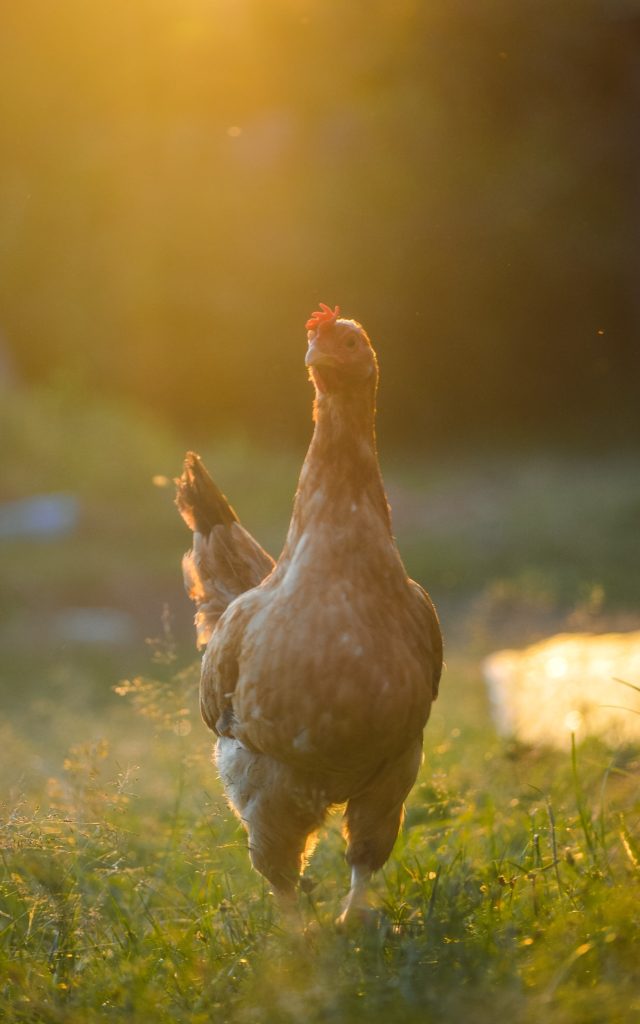You’ve probably heard agriculture is a large contributor to global warming, and growing food for livestock is part of that problem. But farming and cattle have the potential to become a solution. The regenerative agriculture movement offers an alternative to farming and raising cattle in a way that destroys the land. Instead, farmland can become a carbon sink.
What is regenerative farming?
Regenerative agriculture uses farming practices that make healthy soil. Healthy soil then acts as a carbon sink. Carbon sinks are natural resources such as healthy soil, plants, and trees that absorb carbon dioxide from the atmosphere. Farming practices include minimum tillage, cover crops, crop rotation, compost, livestock, and using animal manure as a nutrient for the soil.
Regenerative farming means you’re getting carbon out of the air and into the soil”
– Nathanael Johnson, “‘Regenerative agriculture’: World-saving idea or food marketing ploy?” on Grist.
Drawdown.org lists regenerative farming as the #11 solution to climate change.
The problem with beef
You’ve probably heard we all need to eat less meat to slow climate change. That’s because agriculture is responsible for about 9% of US emissions. Emissions from agriculture are 24% globally when forestry and other land use is included, according to the EPA. See charts. The methane released from cow burps and farts adds up to about one-third of agriculture-related emissions in the US. The methane is largely unavoidable. But all cattle do not have the same effect on the environment.
Factory farming not only contributes to global warming because of all the cow farts, but it also kills the land and pollutes the water. In addition, agricultural land is used to grow grains, corn and soy for the factory-farmed cows, which is then transported. The system is full of waste and pollution, but it does create a whole lot of beef.
Burning Brazil’s Amazon rainforest to make room for cattle and to grow animal feed contributes to climate change through deforestation as well as methane. It’s obviously not sustainable. 80% of Amazon soy is destined for animal feed according to the Yale School of Forestry & Environmental Studies.
Grass-fed cows in the US that graze on small family farms still release methane, but they can also play an important role in the farm’s eco-system. It’s important to distinguish that there are differences.
While it is undeniable that battery or feedlot operations are environmentally disastrous, other livestock operations can have a beneficial impact on the fertility and health of soils.”
– Nick Jeffries, “Regenerative agriculture: how it works on the ground” on Circulate News
Today 23% of ice-free land on this planet is used for livestock grazing. In addition, 33% of croplands are used for livestock feed production, according to the United Nations Food and Agriculture Organization. This is significant because we use so much land to produce grains and corn to feed factory-farmed cows.
Globally, there is enough cropland to feed 9 billion in 2050 if the 40 percent of all crops produced today for feeding animals were used directly for human consumption, while available grasslands were more efficiently used as the basis for livestock feed.”
– Livestock and landscapes, Food and Agriculture Organizations of the United Nations

Pioneers in regenerative farming
Regenerative farming is not new. J.I. Rodale originally began teaching and writing about “organic” farming in 1947. Later, his son Robert Rodale coined the phrase “regenerative organic” to specify a holistic way of farming that makes soil healthy so it can act as a carbon sink.
Soil health is intrinsically linked to the total health of our food system. Soil health affects everything from plant health to human wellbeing and the future of our planet.”
– The Rodale Institute
In 2013, a man named Allan Savory presented a TedTalk called “How to fight desertification and reverse climate change.” In the talk, he explains that cattle can help rebuild soil in areas that have become desert. The cattle improve the soil when “holistic management and planned grazing” techniques are used according to Savory.
Savory’s theory is controversial. The debate hinges on whether or not the carbon sinks outweigh the additional methane. Still, many proponents of regenerative agriculture still reference his work.
Today Eric Toensmeier is a leader in the carbon farming movement. He wrote “The Carbon Farming Solution,” a guide to regenerative farming. He has said the carbon sinks outweigh the methane.
Certain livestock systems also constitute carbon farming, which is especially significant because both extensive grazing and confined livestock production (which depends on annual crop production for feed) have been identified as part of the climate change problem. These carbon farming livestock production systems are climate-friendly even when we account for methane releases.”
– Excerpt from “The Carbon Farming Solution” by Eric Toensmeier
Read Carbon storage and regenerative agriculture basics
The Regenerative Organic Certification
In 2018, the Rodale Institute launched the Regenerative Organic Certification (ROC) program. The three pillars of the certification are soil health, animal welfare, and social fairness. A few brands overseeing the certification include Patagonia, Dr. Bronner’s, Justin’s and Horizon. So far 21 farms and brands have signed on to become Regenerative Organic Certified. Their supply chain and farming practices will soon have their first third party audit. Although you can not buy regenerative organic certified food yet, it will be an important certification to look for when it does become available.
The Biggest Little Farm
All this research on regenerative farming led me to The Biggest Little Farm. The documentary follows a couple from LA as they buy a farm outside of the city. In the beginning, the farm is a mess. It’s fascinating to watch this dead piece of land turn into a thriving ecosystem. If you’re looking for something family-friendly to watch on a Thursday night, this is a good one.
Silvopasture
Another way farming can create a carbon sink is through silvopasture. Silvopasture integrates trees and grazing livestock on the same land. This system allows farmers to generate income from multiple sources. The farmer profits from the animals and the harvest from the trees. Drawdown names silvopasture the #9 solution to climate change.
Pastures strewn or crisscrossed with trees sequester five to ten times as much carbon as those of the same size that are treeless, storing it in both biomass and soil.”
– Drawdown.org
A plant-rich diet
Even if factory farming ended tomorrow and was replaced by regenerative farms, we still need to reduce food waste and eat less red meat. Drawdown.org lists transitioning to a plant-rich diet as the #4 solution to climate change. But I’m hopeful enough of us will support regenerative farms to make them mainstream, so on the special occasions that call for a steak, we have better options.
Eat food, not too much, mostly plants.”
– Michael Pollan
